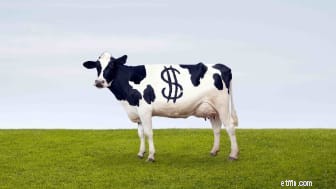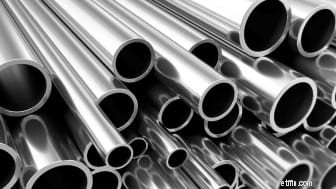
Exchange-traded funds (ETF) zijn het Zwitserse zakmes van beleggen. Je kunt er zo ongeveer alles mee doen:een portfolio-core opbouwen, tactisch verdedigen, een moonshot maken of zelfs winst maken als de markt daalt. En we hielden al deze doelstellingen en meer in gedachten bij het samenstellen van onze lijst met de 22 beste ETF's om te kopen voor 2022.
Hallo. Als 2020 en 2021 ons allemaal iets hebben geleerd, dan is het wel dat we voorbereid moeten zijn.
Voor alle duidelijkheid:de beste ETF's voor 2022 bevatten, net als in de lijst van elk vorig jaar, optimistische fondsen die zijn ontworpen om te profiteren van de verschillende trends die analisten en strategen van Wall Street het komende jaar zien uitkomen. Dat geldt zowel voor aandelen, obligaties als grondstoffen.
Maar hoewel u en ik enige betekenis kunnen toekennen aan willekeurige kalenderdata zoals 1 januari en 31 december, doen de markten dat zeker niet. Daarom nemen we doorgaans ook een paar doorlopende fondsen op die in 2022 net zo geschikt zouden zijn als in 2012 of 2032. We proberen beleggers ook een aantal brandblussers te bieden:defensieve opties die u misschien alleen aantikt wanneer onweerswolken dalen neer op Wall Street.
Dus, wat zegt de kristallen bol over 2022? Een groot aantal strategen voorspellen bescheiden winsten in de hoge enkele cijfers:Goldman Sachs zegt dat de S&P 500 de 5.100 zal bereiken. RBC zegt 5.050, evenals LPL Financial in het midden van hun assortiment - en Kiplinger's Personal Finance Executive Editor Anne Kates Smith is het met hen eens. "Denk ergens boven de 5.050 voor de S&P 500, of ten noorden van 39.000 voor de Dow Jones Industrial Average", zegt ze in onze vooruitzichten voor 2022. (De S&P 500 staat momenteel op 4.649.)
Wall Street is echter niet unaniem optimistisch. BofA pleit voor een lichte daling tot 4.600 tegen het einde van 2022, terwijl Morgan Stanley denkt dat we een volledige 5% lager zullen zijn, op 4.400.
En natuurlijk verwacht niemand dat die prestaties in een rechte lijn zullen uitkomen, en evenmin verwachten ze dat elke sector in gelijke mate bijdraagt aan die winsten of verliezen. Waarde- en cyclische sectoren zijn opnieuw populaire oproepen voor 2022, hoewel analisten een beetje schichtig zijn dat de omicron-COVID-variant de zoveelste hindernis in het herstel zal vormen.
Hier zijn de 22 beste ETF's om te kopen voor 2022 . Als het lijkt op een geweerschot van een selectie, dan is dat met opzet. Beleggers kunnen het komende jaar een breed scala aan doelstellingen nastreven - elk van deze ETF-keuzes vertegenwoordigt een eersteklas manier om ze te bereiken. Belangrijk is dat dit geen suggestie is om een portefeuille van alle 22 keuzes op te bouwen, maar we geloven wel dat er op zijn minst een paar fondsen zijn voor elk type belegger. Dus lees verder en ontdek welke goed gebouwde ETF's het beste passen bij wat u in 2022 probeert te bereiken.
De gegevens zijn van 21 december. Dividendrendementen vertegenwoordigen het achterblijvende 12-maandsrendement, wat een standaardmaatstaf is voor aandelenfondsen.

We beginnen onze blik op de beste ETF's van 2022 met een fonds dat de meeste lezers waarschijnlijk goed kennen:de Vanguard S&P 500 ETF (VOO, $ 425,69). En u kunt er zeker van zijn dat we in de nabije toekomst in elke jaarlijkse lijst zullen leiden met een S&P 500-trackingindexfonds.
Hun leeftijdsgenoten kunnen het immers gewoon niet bijbenen.
Elk jaar houden we het S&P Dow Jones Indices-jaarverslag over actief beheerde fondsen in de gaten, ook al leest het als een gebroken record. Uit het meest recente rapport van april, een samenvatting van 2020:
"[Actief beheerde] large-capfondsen gingen verder waar ze het vorige decennium waren geëindigd - voor de 11e opeenvolgende periode van een jaar presteerde de meerderheid (60%) slechter dan de S&P 500."
Als dit universiteitsvoetbal was, zouden we ons afvragen of dit nog echt een rivaliteit is.
Maar denk er eens over na:gedurende 11 opeenvolgende jaren kan de meerderheid van doorgewinterde professionals – experts die betaald worden en goed betaald worden om aandelen voor hun klanten te selecteren – die slingerende large-cap blendproducten de benchmark niet verslaan. Dus, welke kans denkt u precies dat uw gemiddelde belegger, die misschien een uur per week heeft om zijn portefeuille te herzien, de index zal verslaan?
Bovendien verslaan S&P 500-indexfondsen zelfs andere large-blend indexstrategieën. Met nog maar een paar weken te gaan in 2021, presteerde de VOO beter dan 80% van zijn concurrenten in de Morningstar-categorie en had het de volle vijf van de vijf sterren verdiend met het ratingsysteem van Morningstar.
Wat het product zelf betreft:de Vanguard S&P 500 ETF stelt u bloot aan de 500 voornamelijk in de VS gevestigde bedrijven die handelen op grote Amerikaanse beurzen. Als iemand 'de markt' zegt, bedoelt hij meestal de S&P 500.
Denk eraan:dit is geen perfect uitgebalanceerd fonds dat u een gelijke blootstelling geeft aan elk van de 11 sectoren van de markt. Op dit moment staan technologieaandelen bovenaan met bijna 30% van het fondsvermogen; vergelijk dat met nutsvoorzieningen, onroerend goed, materialen en energie, die elk minder dan 3% uitmaken. Het is ook vermeldenswaard dat de S&P 500 evolueert met de Amerikaanse economie - in de late jaren waren energie en technologie gelijk, per invloed op de index.
En omdat de S&P 500 gewogen is naar marktkapitalisatie, betekenen grotere bedrijven ook meer voor zijn prestaties. Alleen Apple (AAPL) en Microsoft (MSFT) zijn goed voor 13% van de activa van VOO. De onderste 50 bedrijven zijn goed voor iets meer dan 1%. Dat betekent dat u enig risico loopt als beleggers "roteren" uit zwaar gewogen uitblinkers zoals Apple, Microsoft, Amazon.com (AMZN) of Tesla (TSLA).
Zelfs met deze risico's hebben beleggers het echter lang goed gedaan door in de index te beleggen - en met 0,03% aan jaarlijkse kosten is er geen goedkopere manier om dit aan te pakken. Daarom behoort VOO tot onze 22 beste ETF's om te kopen voor 2022.
Lees meer over VOO op de website van de Vanguard-provider.

Een andere "rivaliteit" die al meer dan een decennium behoorlijk scheef is, is de dominantie van groei over waarde - inclusief wat in 2021 weer een overwinning voor groei lijkt te zijn. Maar voor het tweede jaar op rij roept een aanzienlijk aantal strategen op tot een renaissance in ondergewaardeerde aandelen.
"Eerder in 2021 begonnen aandelen van bedrijven die gebonden zijn aan de economische cyclus - algemeen gecategoriseerd als waardeaandelen - beter te presteren dan groeiaandelen, die tijdens de pandemie domineerden toen de vraag naar technologie enorm steeg. Die handel keerde terug nadat de Delta-variant het herstel in twijfel trok." zegt Matt Peron, onderzoeksdirecteur bij Janus Henderson. "Maar als het BBP blijft groeien zoals we verwachten in 2022 (ondanks tegenslagen op de korte termijn) en de rente stijgt, kunnen waardegerichte sectoren zoals financiën, industrie, materialen en energie opnieuw het voortouw nemen."
Daarom hebben we, te midden van een groot aantal fondsen die zichzelf als 'waardefondsen' bestempelen, gekozen voor de Vanguard High Dividend Yield ETF (VYM, $ 109,20) om de large-capwaarde te vertegenwoordigen bij onze beste ETF's voor 2022.
Vanguard's VYM heeft een vrij eenvoudig doel:beleggen in bedrijven met een bovengemiddelde opbrengst. En het doet zijn naam eer aan, met een huidig rendement van 2,8% dat momenteel meer dan het dubbele is van de S&P 500.
Maar daarmee heeft Vanguard High Dividend Yield ETF ook een hoger dan categoriegemiddelde blootstelling aan drie van de bovengenoemde waardesectoren die 2022 ingaan:financiële diensten (23%), energie (8%) en materialen (4%). De vierde – industrie en dienstverlening, met 10% van de activa – ligt slechts twee procentpunten onder de categorienorm.
Peron voegt eraan toe dat tijdens perioden van verkrapping van het monetaire beleid, zoals wat dit jaar van de Federal Reserve wordt verwacht, "beleggers vaak waarderingsgevoelig worden, wat op korte termijn de aantrekkingskracht van waardeaandelen zou kunnen vergroten." Dat zou ook goed nieuws zijn voor de portefeuille van VYM, die goedkoper is dan zijn concurrenten door zowel koers-winstverhoudingen (P/E) als koers-kasstroommetingen.
Lees meer over VYM op de website van de Vanguard-provider.

Hoewel onze beste ETF's voor 2022 er heel anders uitzien dan de editie van 2021, bleven er een paar geselecteerde fondsen over - en geen enkel fonds heeft meer standvastigheid op onze jaarlijkse lijst gehad dan Destillate U.S. Fundamental Stability &Value ETF (DSTL, $ 44,75).
Dat komt gedeeltelijk omdat DSTL de dingen anders doet. En ook omdat het resultaten oplevert.
Veel waarde-ETF's vertrouwen op statistieken zoals K/W, prijs-tot-verkoop (P/S) en prijs-tot-boekwaarde (P/B) om te bepalen wat er te laag geprijsd lijkt. Maar het fonds van Distillate richt zich op de vrije kasstroom (FCF, de contante winst die overblijft nadat een bedrijf de nodige kapitaaluitgaven heeft gedaan om het bedrijf in stand te houden) gedeeld door de ondernemingswaarde (EV, een andere manier om de grootte van een bedrijf te meten die begint met marktkapitalisatie en vervolgens factoren in verschuldigde schulden en contant geld).
Thomas Cole, CEO en mede-oprichter van Distillate Capital, legt uit dat het fonds kijkt naar FCF/EV omdat bedrijven bepaalde cijfers kunnen "bijstellen", zoals inkomsten en inkomsten (die op hun beurt kunnen knoeien met waarderingsstatistieken op basis van die cijfers) , "je kunt geen geld vervalsen."
Distillate U.S. Fundamental Stability &Value ETF begint met 500 van de grootste Amerikaanse bedrijven, en verwijdert vervolgens degenen die duur zijn op basis van de definitie van waarde, evenals die met hoge schulden en/of volatiele cashflows. Het resultaat is een portefeuille die niet veel lijkt op een traditioneel waardefonds - terwijl industrie en dienstverlening groot is met 22% van de belangen, is DSTL ook zwaar in de gezondheidszorg (23%), technologie (21%) en consumentencyclische (14%) namen . Heck, Morningstar ziet Distillate's ETF niet eens als een grootwaardefonds, maar in plaats daarvan als een groot gemengd fonds.
Cole's benadering van waarde zorgt er ook voor dat hij de huidige markt heel anders bekijkt dan de meesten van ons.
"Onze algemene observatie is dat de markt niet zo verraderlijk duur is op basis van de vrije kasstroom die het genereert, dan het zou zijn als je je conclusies zou baseren op maatregelen als P/E en P/B", zegt hij.
Prestaties zien er ook erg rooskleurig uit door Cole's lenzen. DSTL ligt op schema om de meeste van zijn concurrenten in 2021 te overtreffen. En sinds de oprichting op 23 oktober 2018 heeft het fonds niet alleen de drie meest waardevolle ETF's met een gemiddelde waarde van 41 procentpunten verslagen, maar heeft het de drie S&P 500 met een solide 10 punten om op te starten.
Lees meer over DSTL op de site van de leverancier van Distillate Capital.

Beleggers zouden er ook goed aan doen hun koopjesjacht ver buiten de grenzen van large-capaandelen uit te breiden. Voor veel voorspellers van Wall Street zijn kleinere bedrijven veel aantrekkelijker.
"Terwijl large- en midcaps worden verhandeld tegen een premie van 35%-40% ten opzichte van de geschiedenis, worden smallcaps nu in lijn met de geschiedenis verhandeld", zegt Jill Carey Hall, aandelen- en kwantitatieve strateeg voor BofA Securities. "Ze zijn niet alleen de goedkoopste, ze zijn ook een betere diversificatie. ... Hoewel het rendement van activaklassen meer gecorreleerd is vergeleken met 20 jaar geleden, is de [small-cap] Russell 2000 gemiddeld minder gecorreleerd met het rendement van andere activaklassen dan de Russell MidCap of S&P 500 zowel in de afgelopen drie jaar als in de afgelopen decennia."
Onze beste ETF's om te kopen voor 2022 omvatten twee manieren om small-capwaarde aan te vallen. Als eerste:de Pacer US Small Cap Cash Cows 100 ETF (KALF, $ 42,34).
Pacer's CALF beschouwt waarde op vrijwel dezelfde manier als de DSTL van Distillate, met FCF/EV - of "vrije kasstroomopbrengst" - als zijn voorkeursmaatstaf. CALF selecteert met name de 100 beste S&P SmallCap 600-aandelen op basis van het vrije kasstroomrendement, weegt ze vervolgens volgens de maatstaf en herbalanceert de portefeuille elk kwartaal. Voor balans geldt een limiet van 2% bij elke herbalancering.
Nogmaals, de huidige posities van Pacer US Small Cap Cash Cows 100 zijn niet wat u zou verwachten van een waardefonds. Meest opvallend:bijna de helft van het gewicht van de ETF zit in duurzame consumentengoederen; industriële waarden zijn het enige andere dubbelcijferige gewicht met 13%.
Het is moeilijk om veel ETF's te vinden die zo geliefd zijn bij fondsbeoordelaars als CALF. Pacer's fonds verdient momenteel vijf volle sterren van Morningstar, en het onafhankelijke onderzoeksbureau CFRA noemt het fonds een van de best scorende small-cap aandelen-ETF's die het dekt.
Lees meer over CALF op de Pacer ETF's provider site.

Een andere suggestie van de CFRA voor het pellen van de small-capwaarde-sinaasappel is de Roundhill Acquirers Deep Value ETF (DEEP, $ 35,81), en er is niets subtiels aan deze.
DEEP richt zich op 'diep ondergewaardeerde small- en microcap-aandelen'. Het doet dit met behulp van "The Acquirer's Multiple" - een waarderingsmaatstaf die in 2014 is gepubliceerd door Tobias Carlisle, oprichter en directeur van Acquirers Funds. De Acquirer's Multiple richt zich ook op ondernemingswaarde, maar in plaats van FCF wordt deze gedeeld door het bedrijfsresultaat.
Zegt de site die aan dit veelvoud is gewijd:
"Door het bedrijfsresultaat van bovenaf te berekenen, wordt de statistiek gestandaardiseerd, waardoor een vergelijking tussen bedrijven, bedrijfstakken en sectoren mogelijk is, en door speciale items uit te sluiten - inkomsten waarvan een bedrijf niet verwacht dat ze zich in de komende jaren zullen herhalen - zorgt ervoor dat deze inkomsten alleen gerelateerd zijn naar operaties."
Het gemiddelde bezit van de 100-aandelenportefeuille is iets minder dan $ 1 miljard aan marktkapitalisatie. Volgens Morningstar zit 79% van het fonds in micro-capaandelen, 20% in smallcaps en de resterende 1% in mids. En elke holding krijgt evenveel zeggenschap over de prestaties, aangezien ze zijn vastgesteld op een gewicht van 1% per stuk bij elke driemaandelijkse herbalancering. Tot de topposities op weg naar 2022 behoren de specialist in procesautomatisering Hollysys Automation Technologies (HOLI) en de leverancier van beschermende kleding Lakeland Industries (LAKE).
Sectorwegingen zijn iets schever. De portefeuille wordt gedomineerd door financiële dienstverlening (30%), duurzame consumentengoederen (24%) en industrie en dienstverlening (22%). Er blijft dan minder dan een kwart van de rest van het fonds over om te worden verdeeld over zeven andere sectoren.
Het is niet verwonderlijk dat deze agressieve benadering zijwaarts kan gaan; Het fonds van Roundhill werd in 2019 en 2020 bijvoorbeeld vertrapt door zowel brede small-cap- als waarde-indices. Maar het heeft in heel 2021 in verschillende mate beter gepresteerd.
Houd er rekening mee dat DEEP niet goedkoop is. De jaarlijkse kosten van 0,80% liggen ruim boven de norm voor uw gemiddelde indexfonds.
Lees meer over DEEP op de Roundhill-providersite.

Een bijna universele concessie is dat het Amerikaanse bedrijfsleven in 2022 veel moeilijker groei zal vinden dan in 2021, grotendeels omdat vergelijkingen op jaarbasis lang niet zo eenvoudig zullen zijn.
Dat betekent dat beleggers selectiever zullen moeten zijn, en voor veel strategen legt dat een grotere nadruk op de factor 'kwaliteit'.
"In eerdere cycli, toen de rentecurve is afgevlakt, heeft de impact op aandelen ervoor gezorgd dat beleggers kwaliteitsbedrijven zochten die elke dreigende renteschok konden overleven", zegt William Davies, plaatsvervangend global chief investment officer bij Columbia Threadneedle Investments, die opmerkt dat voor hem:kwaliteit omvat solide balansen en sterke concurrentievoordelen. "Terwijl we 2022 ingaan, hebben we de rentecurve steiler, vlakker en weer zien stijgen over de curve, en dat heeft geleid tot een meer gemengd scenario in termen van wat de markt leidt. ... De bedrijven die we leuk vinden - kwaliteitsbedrijven met solide balansen en concurrentievoordelen – een betere kans om volatiliteit te doorstaan."
De iShares MSCI USA Quality Factor ETF (QUAL, $ 141,72) is een van de grootste ETF's gericht op de kwaliteitsfactor. QUAL heeft momenteel een verdeling van ongeveer 75/25 van large- en mid-capaandelen met positieve fundamentals, zoals een hoog rendement op het eigen vermogen, een stabiele winstgroei op jaarbasis en een lage financiële hefboomwerking.
Technologiebedrijven zoals Apple en Microsoft staan momenteel bovenaan met 28%, hoewel iShares MSCI USA Quality Factor ETF ook dubbele cijfers geeft voor gezondheidszorg, consumentengoederen, communicatiediensten en financiële dienstverlening. Maar zoals veel fondsen die zich richten op een groot aantal fundamentele statistieken, kunnen deze sectorwegingen in de loop van de tijd enorm verschuiven.
Toch lijkt QUAL een van de beste ETF's te zijn om te kopen voor 2022 voor beleggers die hun portefeuille willen verankeren met blue-chip aandelen met kogelvrije financiële gegevens. Vooral als ze van een koopje houden:de kostenratio van 0,15% ondergraaft 93% van de concurrenten van de ETF.
Lees meer over QUAL op de site van de iShares-provider.

Een van de meest prominente trends van de afgelopen jaren is een verschuiving naar het prioriteren van criteria op het gebied van milieu, sociaal en corporate governance, of ESG-criteria. Beleggers die zich zorgen maken over alles, van duurzame praktijken tot vertegenwoordiging van minderheden in de bestuurskamers van bedrijven, eisen veranderingen.
Dit vertaalt zich in een echte investeringsmeevaller. Volgens BofA Securities ging tot ongeveer driekwart van 2021 $ 3 van elke $ 10 aan wereldwijde instroom van aandelen (en $ 1 van elke $ 10 aan wereldwijde instroom van obligaties) naar ESG. Op de langere termijn merkt BlackRock op dat het beheerde ESG ETF-vermogen de afgelopen vier jaar met meer dan 300% per jaar is gegroeid.
De kans is nog lang niet voorbij.
"Sterk bewijs suggereert dat de interesse in ESG-producten en -oplossingen nog maar net is begonnen", zegt Brad McMillan, Chief Investment Officer voor Registered Investment Adviser en onafhankelijke broker-dealer Commonwealth Financial Network. "Van de kant van investeerders zal de komende 25 jaar naar schatting $ 73 biljoen aan vermogensoverdracht plaatsvinden. Een groot deel van deze rijkdom zal in handen vallen van twee demografische groepen:vrouwen en millennials. Beide groepen hebben een grote interesse in duurzaam beleggen. in de toekomst zal hun aanzienlijke kapitaal waarschijnlijk worden geherpositioneerd in de richting van ESG-sectoren."
U kunt altijd individuele aandelen kiezen, zoals die in Kiplinger's ESG 20. Maar een van de gemakkelijkste en goedkoopste manieren om te beleggen met het oog op ESG is een eenvoudig indexfonds:de iShares ESG Aware MSCI USA ETF (ESGU, $ 105,29).
ESGU volgt de MSCI USA Extended ESG Focus Index, die bestaat uit large- en mid-capaandelen waarvan MSCI heeft vastgesteld dat ze positieve ESG-kenmerken hebben. De index sluit ook bedrijven uit zoals wapenfabrikanten en tabaksfabrikanten, evenals bedrijven die "betrokken zijn bij zeer ernstige zakelijke controverses".
Wat u krijgt is in feite een kernholding met grote kapitalisaties. ESGU heeft momenteel 320 aandelen in portefeuille, waaronder veel grote S&P 500-componenten zoals Apple, Microsoft en Nvidia (NVDA). De prestaties sinds de start van eind 2016 zijn ook niet veel anders geweest dan die van een S&P 500-tracker, met een totaalrendement van 127% versus 132% voor de iShares Core S&P 500 ETF (IVV).
Het heeft nog steeds dezelfde problemen als een S&P 500 - Apple en Microsoft hebben enorme individuele gewichten van respectievelijk meer dan 6% en 5%, en de technologiesector domineert met 30% van de activa.
Wat voor u "verantwoordelijk" is, is misschien niet hetzelfde als wat voor iShares verantwoordelijk is, dus het kan zijn dat u het niet eens bent over de voordelen van een paar, enkele of veel van de ESGU-aandelen. Als dat het geval is, overweeg dan deze andere ESG-fondsen.
Lees meer over ESGU op de site van de iShares-provider.

We gaan kijken naar segmenten van de markt, te beginnen met een populaire keuze voor 2022:de industriële sector.
Industriële sectoren, waaronder fabrikanten, bouwbedrijven en tal van transportbedrijven, en andere industrieën, doen het doorgaans goed als economieën groeien en wanneer de inflatie hoog oploopt.
"De industriële economie is gepositioneerd om langer sterker te presteren, waarbij de industriële productie naar verwachting beter zal zijn dan het langetermijngemiddelde in FY22", zeggen analisten van Stifel in hun vooruitblik op 2022. "De vraagzijde blijft gezond en zou, in combinatie met beperkingen in de toeleveringsketen, de industriële productie op 4% of beter moeten ondersteunen."
De $1,2 biljoen Infrastructure Investment and Jobs Act, aangenomen in november, geeft wat extra pit in de sectorverwachtingen, niet alleen in 2022, maar veel verder op de weg.
We houden hier van een eenvoudige benadering van industriële sectoren, dus tellen we het Industrial Select Sector SPDR Fund (XLI, $ 102.42) behoren tot onze beste ETF's om te kopen voor 2022.
De XLI houdt alle aandelen uit de industriële sector in de S&P 500, die momenteel 72 zijn. Natuurlijk neigt dat in de eerste plaats naar large-caps, en aangezien het fonds marktkapitalisatiegewogen is, hebben de grootste aandelen de grootste wegingen. Maar op dit moment heeft XLI in ieder geval geen oogverblindende overwegingen op het gebied van single-stock. Railroad Union Pacific (UNP) is the only stock that commands more than 5% of assets, and United Parcel Service (UPS), Honeywell (HON) and Raytheon Technologies (RTX) each check in at more than 4%.
From an industry perspective, you're getting heaping helpings of machinery (19%), aerospace and defense (17%), industrial conglomerates (13%), and road and rail (12%). Air freight and logistics, professional services and airlines are among the various industries peppered in at single-digit weights.
We'll also note that XLI earns five out five stars from CFRA, which factors in forward-looking holdings-level analysis, relative performance and costs when compiling its ratings.
Learn more about XLI at the SPDR provider site.

As the infrastructure bill made its way through Washington, we recommended 12 infrastructure stocks to benefit from the bill – and one ETF: Global X U.S. Infrastructure Development ETF (PAVE, $27.87).
PAVE and its competitors are an example of how you have to look much deeper than an ETF's name. That's because many so-called infrastructure funds are rich in utility stocks, energy pipelines and other companies that seem less likely to directly benefit from the spending flowing from the IIJA.
But the Global X U.S. Infrastructure Development ETF, launched in 2017, was made with an eye toward America's crumbling infrastructure. Given the relative popularity of infrastructure spending across both political parties, a big outlay always seemed right around the corner – and PAVE was optimally designed to benefit.
PAVE holds nearly 100 stocks, most of which are from the industrial (72%) or materials (21%) sectors. Steelmaker Nucor (NUE), power management company Eaton (ETN) and construction materials firm Vulcan Materials (VMC) are a who's who of stocks that were first to mind as soon as President Joe Biden turned his attention to infrastructure spending.
As infrastructure dollars actually begin to be spent in 2022, PAVE's various components should feel a wind in their sails.
Learn more about PAVE at Global X's provider site.

In December, CFRA looked more favorably upon two sectors:technology and energy.
"CFRA thinks cyclical sectors will be boosted now that the omicron-induced selloff has likely run its course," says Todd Rosenbluth, CFRA's head of ETF and mutual fund research. He noted that colleague Sam Stovall, chief investment strategist, upgraded tech and energy from Marketweight (equivalent of Hold) to Overweight (equivalent of Buy), adding that the sectors' relative strength in 2021 positions them for potential outperformance in 2022.
But while technology is bursting with attractive ETF options, "Investors have fewer appealing choices in the energy sector," Rosenbluth says. "CFRA has four or five-star ratings on just two of 19 ETFs classified in the U.S. sector."
One of those is the Vanguard Energy ETF (VDE, $76.44), which is, like XLI, another straightforward sector fund. Unlike XLI, however, VDE is more than the S&P 500's large caps – while the 104-holding fund is still heavy in large companies (58%), another 31% of assets are in mid-cap stocks and the remainder is in smalls.
Like most cap-weighted energy funds, though, VDE is all about Exxon Mobil (XOM) and Chevron (CVX), which combine to account for a whopping 37% of assets. That means more than a third of the fund's daily performance can be chalked up to whatever these integrated energy majors do on a particular day.
But the largest impact on VDE will be whatever oil prices do. Rosenbluth notes that Action Economics forecasts West Texas Intermediate (U.S. crude oil) prices to average $83.26 per barrel by late 2022 thanks in part to rising global GDP. Stovall adds that OPEC's "continued strong supply discipline will likely maintain upward pressure on prices."
Learn more about VDE at the Vanguard provider site.

The other sector CFRA is hotter on as we enter 2022 is technology. And Todd Rosenbluth, the firm's head of ETF and mutual fund research, says investors are being gifted an entry point in tech as we enter 2022.
"The recent pullback in high-growth, technology-oriented names represents an enhanced buying opportunity heading into 2022 amid a rising interest rate environment where supply constraints and inflationary pressures are likely to ease," he says.
In most years, investors could do just fine investing in a basic sector index fund and calling it a day. Honestly, that could do the trick again in 2022.
However, you might want to focus your investments in a handful of related breakthrough technologies that are beginning to change the way the world operates. If so, consider the young TrueShares Technology, AI and Deep Learning ETF (LRNZ, $47.24), which came to market in March 2020 and is the smallest of our best ETFs to buy for 2022, at just $28 million or so in assets under management.
"Deep learning is a convergence of opportunity and capability," says Michael Loukas, principal and CEO of LRNZ issuer TrueMark Investments. "[Artificial intelligence] has been around for, technically speaking, like 100 years. And the reality is that the first real application of it was during World War II when you started to see the codebreaking machines. And the reason it hasn't advanced far beyond where we are right now is because there wasn't enough processing power.
"AI and deep learning, for it to work, you need data, you need algorithms, and you need processing power, the hardware. And we're finally at a stage where the algorithms, the data, the processors, are all keeping up with one another. It's going to change the world fundamentally."
The LRNZ portfolio, then, is a tight 23-stock collection of leaders in artificial intelligence, machine learning or deep learning platforms, algorithms or applications. While holdings span several industries, cybersecurity, software-as-a-service and biotechnology stand out. "Those three areas are really intertwined with the growth and option of deep learning."
Top holdings at the moment include cloud-based security company Zscaler (ZS), chipmaker Nvidia and online game platform Roblox (RBLX).
Learn more about LRNZ at the TrueShares provider site.

"Cybercrime is one of the most daunting and fastest-evolving threats facing companies today," say William Blair analysts Corey Tobin and Nabil Elsheshai. "It also presents an opportunity for investors to capitalize on the growth of the next generation of leading cybersecurity providers."
If you read the news, it's difficult to disagree. If there's anything we're often reminded of, it's that cybercriminals are constantly finding ways to access sensitive information from the government, the military and the private sector – and that the only way to fend them off is to pour more resources into cybersecurity.
That makes for some awfully attractive market forecasts.
"We anticipate that the cybersecurity software sector will grow at approximately 12% year-over-year in the intermediate term, reaching $220 billion by 2025, making it one of the fastest-growing segments of the software market, behind only customer relationship management and database management," Tobin and Elsheshai say.
ETF provider Global X cites Grand View Research estimates saying that growth will continue even farther into the future, to $370 billion by 2028. And that's a major selling point of their Global X Cybersecurity ETF (BUG, $31.67).
BUG is a pretty straightforward fund that invests in more than 30 cybersecurity stocks. Right now, top holdings include firewall specialist Palo Alto Networks (PANW), enterprise security firm Fortinet (FTNT) and broad cybersecurity provider Check Point Software (CHKP).
Learn more about BUG at the Global X provider site.

Real estate investment trusts (REITs), typically one of the market's best sources of equity yield, are shaping up to be among the more popular picks of strategists looking ahead to 2022.
"Real estate investments stand to benefit from a number of macroeconomic crosscurrents:the economy is recovering, which should lead to higher occupancy rates and REITs have historically been among the best performing assets during periods of higher-than-normal inflation," say Jason Pride and Michael Reynolds, the respective chief investment officer of private wealth and vice president of investment strategy at investment management firm Glenmede.
Indeed, S&P Global notes that during the majority of periods of significantly rising rates, REITs have either matched or beaten the S&P 500.
The Invesco S&P 500 Equal Weight Real Estate ETF (EWRE, $40.60) provides a small twist on the traditional sector look. That is, it takes the 30 REITs within the S&P 500, and rather than weighting them by market capitalization, it instead equally weights them at every rebalancing. Top holdings right now include self-storage facility operator Public Storage (PSA), telecommunications infrastructure play Crown Castle (CCI) and data center REIT Equinix (EQIX).
The upshot of this is that the ETF is less likely to tank because any one component suddenly unraveled. Of course, the flipside is that if a larger component takes off, EWRE won't benefit as much as a cap-weighted fund will.
Another bonus:Invesco's fund offers a larger yield than many of its peers in a sector that's already known for its dividend generosity.
Learn more about EWRE at the Invesco provider site.

The wide appeal of financial stocks – especially banks – as we enter 2022 isn't too difficult to understand.
An improving economy is generally good for financial activity, especially products such as mortgages and auto loans. And higher interest rates help banks enjoy better spreads between what they borrow at and what they lend at, fattening their bottom line.
"We believe investors should continue to [be] overweight U.S. banks, and three months into our 'buy the banks' call we feel even better about the positive [earnings per share] and valuation optionality from inflecting loan growth, cash redeployment and higher interest rates," says Christopher McGratty, analyst with Keefe, Bruyette &Woods (KBW). "Our preference is to own spread-based lenders with the [small and mid-cap stocks] offering the greatest relative value, while sooner/more frequent rate hikes could add 10% to 20% to 2023 [earnings] for many of our favorite asset-sensitive names."
You can find the lion's share of those names, including First Citizens BancShares (FCNCA), Signature Bank (SBNY) and Citizens Financial (CFG), in the SPDR S&P Regional Banking ETF (KRE, $68.86).
KRE holds more than 140 regional banks, and does so via a modified equal weighting system that ensures there's a thinner representation gap between super-regionals and small, local banks. That's how $81 billion PNC Financial (PNC) ends up being the No. 5 weight at 1.9% … four slots below top holding First Citizens, which is just an $8 billion company.
Compare that to the lopsided iShares US Regional Banks ETF (IAT), where PNC, Truist (TFC) and U.S. Bancorp (USB) combine to account for a whopping 37% of assets.
Learn more about KRE at the SPDR provider site.

Internationally speaking, developed-market equities – especially European stocks – have long been known for sporting much more attractive valuations compared to their U.S. counterparts. That remains the case today, but strategists also cite rebound potential as they look across the ponds.
"Globally, Europe and Japan were hit especially hard by the pandemic in 2021," says Ryan Detrick, chief market strategist for LPL Financial, the nation's largest independent broker-dealer. "But as COVID-19 cases potentially fall globally, those areas could be ripe for better economic growth in 2022."
Capital Group's European economist, Robert Lind, adds that "The major European economies may grow significantly faster [than the U.S.], in the 4.0% to 5.0% range, as the eurozone enjoys a delayed but now strong COVID rebound."
The iShares MSCI International Quality Factor ETF (IQLT, $38.58) provides diversified exposure to Europe, Japan and other developed markets while also filtering stocks by the same quality-factor metrics as QUAL.
The 300-stock portfolio is heaviest in developed Europe, which makes up half of the portfolio – and that's without accounting for an additional 14% exposure to the U.K. Japan is another 14% of assets, and the rest of the portfolio is spread across Canada, Australasia and developed Asia.
Both QUAL and IQLT are largely blue-chip funds, with the former's holdings averaging about $150 billion in market cap, and the latter closer to $60 billion. And as is the case for many European funds, IQLT yields more than its American cousin. But it's the attention to reliability and stability that might make IQLT one of the best ETFs for 2022.
Top holdings at the moment include Dutch semiconductor equipment manufacturer ASML Holding (ASML), Swiss pharmaceutical giant Roche Holding (RHHBY) and French luxury goods company LVMH (LVMUY).
Learn more about IQLT at the iShares provider site.

Here's a fun fact:In roughly three years, Kiplinger has been acquired by not one, but two U.K.-based companies.
And we promise that's not the motivation for this next pick.
While European equities are considered inexpensive at the moment, British stocks are downright cheap.
Mike Bell, global market strategist for J.P. Morgan Asset Management, said during summer 2021 that "U.K. valuations aren't just cheap when compared with other markets. They are also below their long-run average valuation since 1990." And little has changed since then.
"I think regionally the United Kingdom looks quite interesting. It is the cheapest market on a per-growth unit basis globally, and to me I think that there isn't a lot of long-term rationale for that dislocation, and I think that represents an opportunity for positive reversion," adds George P. Maris, co-head of equities, Americas, for Janus Henderson.
The iShares MSCI United Kingdom ETF (EWU, $32.24), then, could be one of the best ETFs to buy for 2022 – at least if Britain equities' value prices finally translate into returns after years of disappointing results.
EWU is a decently balanced collection of 85 stocks that sees six sectors currently weighted in double digits. Consumer staples (20%) is top of the list, but financials, healthcare, industrials, materials and energy all play significant roles in the portfolio. Top holdings include pharmaceutical name AstraZeneca (AZN), consumer products giant Unilever (UL) and spirits maker Diageo (DEO).
The average P/E of an EWU stock is less than 12 right now, and both P/S and P/B are under the category average as well. New investors are also getting twice the S&P 500's yield at 2.8% currently.
Learn more about EWU at the iShares provider site.

Most investors can give you the broad-strokes rundown on what risks they're taking when they chase growth via emerging markets (EMs). But rarely have they experienced as acute – and painful – an example as what China delivered in 2021.
Simply put, China cracked down on publicly traded companies, especially in the tech sector. In April 2021, Beijing forced Jack Ma's Ant Group, the country's largest payments provider, to restructure to more resemble a bank company – and then in September, numerous reports claimed China was planning on breaking apart Ant Group's app Alipay to be broken up. In early December, ride-sharing giant Didi Chuxing was pressured into delisting from the New York Stock Exchange and pursuing a Hong Kong listing. In between, Alibaba (BABA), JD.com (JD) and other online giants were slapped with large antitrust fines.
"I think for investors, this made them realize that they miscalculated the autocracy risk and government intervention risk in EMs," says Perth Tolle, sponsor of the Freedom 100 Emerging Markets ETF (FRDM, $32.76), which looks to sidestep this and other risks in emerging markets that can ultimately stifle economic growth.
You see, FRDM is a departure from the other best ETFs to buy for 2022 in that it's not market cap-weighted or equally weighted … but freedom -weighted.
The ETF's tracking index begins with a selection universe of 26 emerging countries. From there, minimum country-level market-cap requirements must be met. Then, using country-level data from the Cato Institute, Fraser Institute and the Friedrich Naumann Foundation for Freedom, countries are selected and weighted based on 76 different metrics of civic, political and economic freedoms, such as rule of law, freedom of the press, women's freedoms and government interference in private markets.
The result is a much different EM fund than many prominent ETFs that feature China and India heavily. As of late 2021, neither were featured – instead, Taiwan (21%), Chile (16%) and Poland (16%) were tops among 10 countries represented.
The Freedom 100 Emerging Markets ETF's lack of Chinese exposure specifically was a boon in 2021, as many China-specific ETFs lost more than 20% through late in the year, and broad EM funds with heavy EM exposure were dragged to negative returns. FRDM was up 2% with a little more than a week to go in 2021.
"We have always said that freer countries perform more sustainably, recover faster from drawdowns, use their capital and labor more efficiently and have less capital flight," Tolle says. "We got to test the second part (recovering faster) in the latter part of 2020; it passed that test and outperformed broad EM, EM ESG and EM ex-China. But in 2021, we really saw the more basic thesis, which is that personal and economic freedoms set the foundation for growth."
A growing investor realization of these tenets helped the Freedom 100 Emerging Markets ETF more than triple its assets in 2021, to more than $105 million at last check. And entering a 2022 in which many strategists have China as a big, fat question mark, FRDM takes at least one uncertainty off the board.
Learn more about FRDM at its provider site.

Bond investors are in for some serious challenges in 2022. Central banks all over the world are poised to tighten their monetary policy, and that includes the Federal Reserve here at home.
At its last policy meeting, the Fed said it was going to effectively double the pace of its tapering, which would put the end of its asset purchases in March, rather than mid-2022 as previously forecast. Meanwhile, the latest "dot plot" from December indicates that a majority of the Fed's members believe their benchmark interest rate will climb three times in 2022.
That, as well as expectations for slowing but still-higher-than-pre-COVID inflation, have several strategists recommending Treasury Inflation-Protected Securities (TIPS), which are U.S. government bonds that rise with inflation and decline with deflation.
"Barbelling credit with TIPS could add another real income stream, this time on the defensive side of a bond portfolio," say State Street Global Advisors strategists. "Because TIPS are backed by the full faith and credit of the U.S. government, they have low credit risk. Adding TIPS to a portfolio could help counteract some of the equity risk introduced by overweights to credit."
The SPDR Bloomberg 1-10 Year TIPS ETF (TIPX, $20.98) adds another level of defense by targeting shorter-maturity issues. TIPX's roughly 40 holdings have an average maturity of just less than five years, which is well under the category average of nearly eight years. As a result duration is 4.9 years, versus 6.8 for the category average. (Duration is a measure of bond-fund risk that implies for every percentage-point increase in interest rates, TIPX will decline 4.9%, and vice versa.)
TIPX is a painfully boring entry in our best ETFs to buy for 2022 – you obviously won't mint a fortune sitting in short-duration TIPS. But it should provide a measure of protection against persistent inflation, more than compensating you for the fund's marginally negative current yield.
* Het SEC-rendement weerspiegelt de verdiende rente na aftrek van de fondskosten voor de meest recente periode van 30 dagen en is een standaardmaatstaf voor obligatie- en preferente aandelenfondsen.
Learn more about TIPX at the SPDR provider site.

If investors do want to squeeze yield out of the fixed-income market in 2022, several strategists suggest you go big or go home. That means delving into high-yield debt (read:"junk").
"One area of fixed income that is in reasonable shape is high yield," says Capital Group Fixed Income Portfolio Manager Kirstie Spence. "Although it's at the tighter end of its historical range, the yield is still a very substantial pickup both to investment-grade corporates, and also to U.S. Treasuries."
Furthermore, adds Gene Tannuzzo, global head of fixed income at Columbia Threadneedle, "We believe 2022 will be a strong year for 'rising stars' as many high-yield companies achieve investment-grade status. In an environment where price appreciation appears muted, rising star candidates could represent a rare opportunity for gains. Risk premiums between BB- and BBB-rated bonds still offer value and prices could rise as investors anticipate higher ratings."
However, Tannuzzo says, "it takes targeted fundamental credit research to identify these favorable credit stories ahead of ratings agency action." Thus, investors might be best-served with an actively managed touch – putting Fidelity High Yield Factor ETF (FDHY, $54.57) among our top ETFs for 2022.
Michael Cheng, who has served as lead manager since inception in June 2018, oversees a portfolio of some 425 below-investment-grade debt issues. Credit quality here is better than most peers, with 45% of assets in BB-rated bonds (the highest grade of junk), and another 48% in B-rated debt. Just 5% is in below-B bonds, versus the category average of nearly 15%.
This positions FDHY to potentially enjoy gains from "rising star" bonds while still offering an attractive SEC yield of more than 4% at present.
Learn more about FDHY at the Fidelity provider site.

Aside from junk, few other fixed-income categories are offering up yields above inflation. Among them? Preferred stocks.
Companies sometimes issue preferred stocks as another way to raise funds without diluting common-stock shareholders but also without packing on more debt. And they're often referred to as "hybrids" because they share characteristics with both stocks and bonds.
On the one hand, preferred stocks actually represent ownership in the company, and they trade on exchanges just like common shares. However, the income they produce is more like a bond's coupon payment – a set amount rather than a stock's dividend, which can grow over time. Also, preferred stocks tend to trade around a par value, like a bond, so you don't rely on them for growth the way you do common shares.
And the "preferred" moniker? That's because preferred shareholders actually have priority over common shareholders. A company can't cut the dividend on preferreds until they cut the commons. And in some cases, dividends are cumulative – if the company stops paying for any reason, they still must eventually pay all owed dividends to preferred shareholders.
Several ETFs provide access to preferreds, but among the best is the VanEck Preferred Securities ex Financials ETF (PFXF, $21.74).
PFXF was created in 2012, in the wake of the Great Recession, as one of several "ex-financials" funds meant to avoid the risks of the troubled sector. You see, most preferred funds are teeming with preferred stocks issued by banks, insurers and other financial-sector stocks – which naturally cratered as the financial crisis sent some operators into bankruptcy and sent others into existential jeopardy.
VanEck Preferred Securities ex Financials ETF refuses to hold any such preferreds. Instead, its 127 holdings come from industries such as utilities (28%), residential and commercial REITs (17%) and telecom (9%).
It's a safe assumption most investors don't think another financial crisis is imminent. But VanEck's fund is still relevant thanks to higher yields and lower costs compared to most of its peers. That has led it to outperform against most of the other major preferred funds over every significant time frame.
Learn more about PFXF at the VanEck provider site.

One last play to address both inflation and a return to the recovery is hard commodities, which the Wells Fargo Investment Institute (WFII) is bullish on heading into 2022.
"We are expecting another good year," says John LaForge, head of global real asset strategy for WFII. "The midpoint of our 2022 Bloomberg Commodity Index (BCOM) target is 15% higher than last Wednesday's closing price. If hit, this would be the third straight year of double-digit gains for the BCOM."
In short, Wells Fargo believes that commodities began a new bull super cycle – a period during which commodity prices largely move together in sync – in March 2020. Bull cycles average 17.5 years with an average 247% gain, and the current bull cycle has gained just 63% and is only 1.7 years old.
"To gain exposure to the Commodities bull super cycle, we recommend a broad basket of commodities," LaForge says, as "bull super cycles have been known to lift most commodity prices.'
Enter the Abrdn Bloomberg All Commodity Longer Dated Strategy K-1 Free ETF (BCD, $30.13). BCD provides investors with access to the performance of futures contracts for nearly two dozen commodities, from natural gas to aluminum to corn. Currently, exposure is heaviest in energy commodities (36%), followed by agriculture (28%), precious metals (17%), industrial metals (14%) and livestock (5%).
And as the name suggests, Abrdn Bloomberg All Commodity Longer Dated Strategy K-1 Free ETF doesn't send out a K-1 tax form each year, which is a blessing for investors that don't want the additional tax complexity. Instead, you'll get a Form 1099.
Learn more about BCD at the Abrdn provider site.

"Always have an escape plan."
Desmond Llewellyn's final line as Q in the James Bond franchise might have served many investors well during the 2020 COVID bear market. One of the best ways to avoid deep losses in stocks, of course, is to not be long stocks.
But that's counterintuitive to what most of us are trying to accomplish. Long term, it makes sense for most investors to stick with a buy-and-hold plan through thick and thin, collecting dividends along the way. If you hold high-quality stocks, they'll likely bounce back after any market downturn. Fleeing to cash, meanwhile, not only could keep you from enjoying a rebound if you time the market wrong, but could also deprive you of attractive "yields on cost" (the actual dividend yield you receive from your initial cost basis).
That said, the point of this list is to make sure you're prepared for whatever the market sends your way. And if you're both convinced a downturn is ever coming, and you want to actively protect your portfolio against it, one way you can do so without jettisoning your portfolio is to put a bit of money to work in a simple market hedge.
The ProShares Short S&P500 ETF (SH, $13.97), most simply put, goes up when the market goes down. More specifically, it provides the inverse daily return of the S&P 500, which means if the S&P 500 declines by 1% on Monday, SH will gain 1% (minus expenses, of course).
This is not one of the best ETFs to buy and hold throughout 2022, and certainly not forever. Instead, it's a tool to put to use, investing a small percentage of your portfolio in it if your market outlook is grim. By doing so, you can offset some of the losses that your long holdings might incur during a down market – like many investors were rewarded for doing in February 2020 when it became apparent that COVID-19 was going to hit the U.S. hard.
The natural risk is that if you're wrong, and stocks go up, your portfolio's gains won't be as robust as they might have been.
Again, if you're a buy-and-hold investor, you'll do great just staying the course. But if you revel in being more involved and want to fade potential downside in the future, SH is a straightforward, effective hedge.
Learn more about SH at the ProShares provider site.